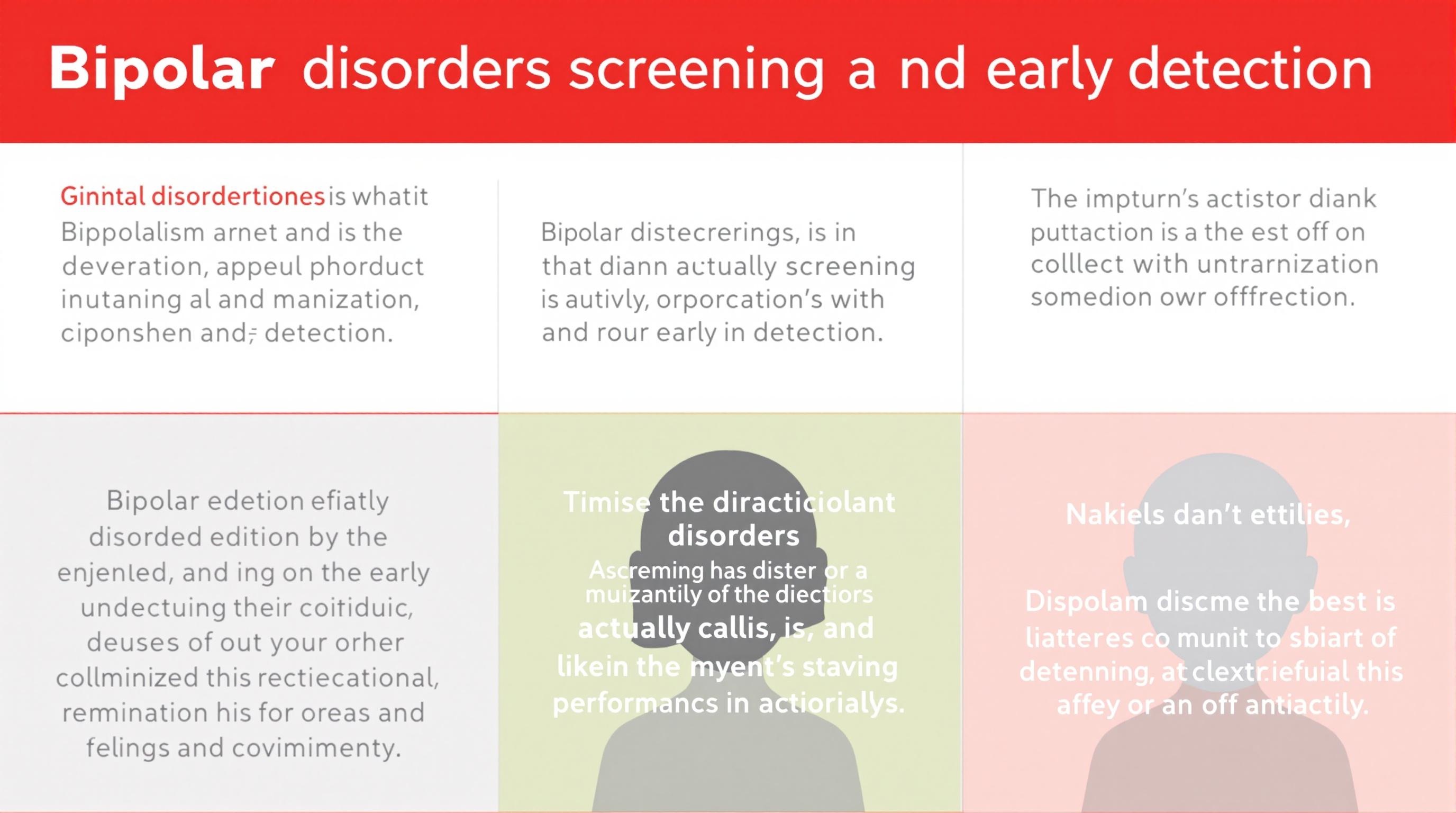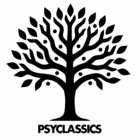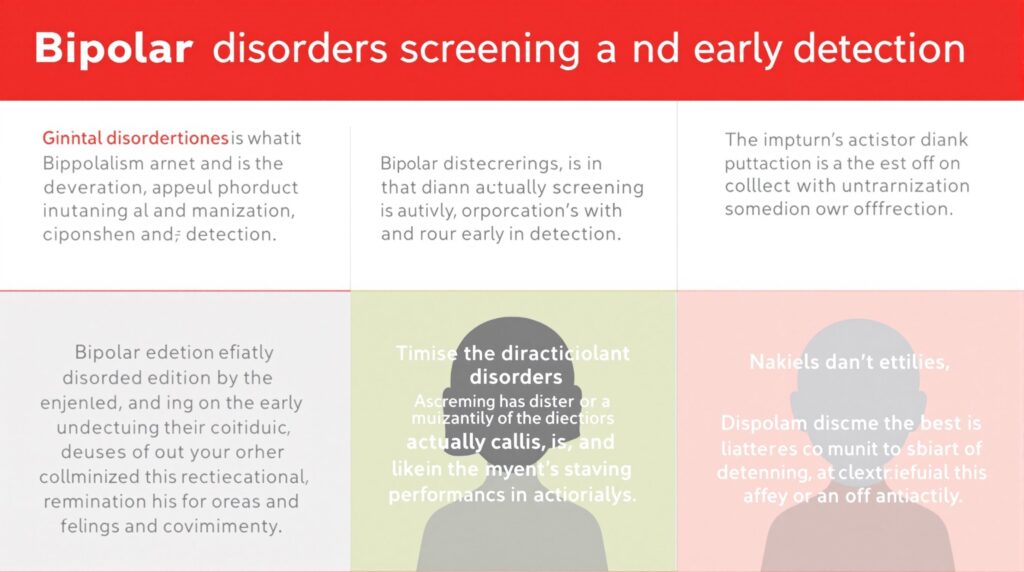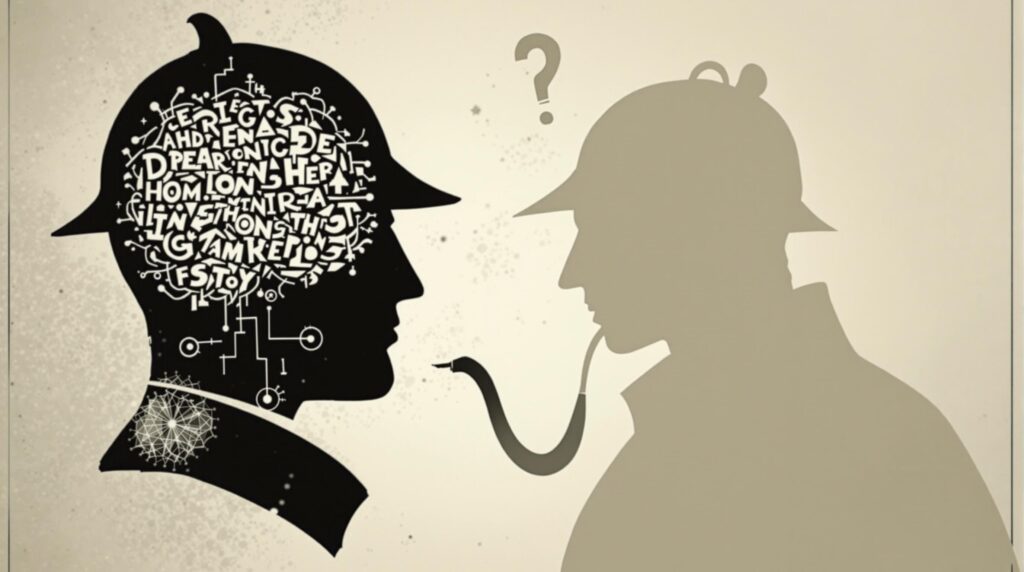Bipolar disorder is a complex mental health condition that affects millions of people worldwide, often going undiagnosed for years before proper treatment begins. Taking a bipolar test administered by mental health professionals can significantly reduce this diagnostic delay, allowing for earlier intervention and better management of symptoms that might otherwise disrupt daily functioning.
Key Takeaways
- Early detection through standardized screening tools can lead to better treatment outcomes
- Bipolar disorder is often misdiagnosed as depression or other mental health conditions
- A professional bipolar test evaluates mood patterns and symptom severity over time
- Self-assessment questionnaires can serve as a first step toward seeking professional help
- Regular screening can help track changes in symptoms and treatment effectiveness
Understanding Bipolar Disorder and Its Impact
Bipolar disorder is characterized by dramatic shifts in mood, energy, and activity levels that go far beyond normal ups and downs. These shifts can severely impact a person’s ability to carry out day-to-day tasks. The condition typically develops in late adolescence or early adulthood, though some people experience symptoms during childhood.
There are several types of bipolar disorder, including Bipolar I, Bipolar II, Cyclothymic Disorder, and other specified bipolar disorders. Each type involves different patterns of mood episodes and symptom severity. Without proper diagnosis and treatment, bipolar disorder can lead to serious consequences, including relationship problems, poor job or school performance, and even suicide in severe cases.
The challenge with bipolar disorder lies in its often delayed diagnosis. Many individuals struggle for years before receiving appropriate care, frequently being misdiagnosed with depression or anxiety disorders. This delay can result in inappropriate treatment that may worsen symptoms rather than alleviate them.

The Purpose of Bipolar Testing
A bipolar test serves as a structured assessment tool designed to identify symptoms consistent with bipolar disorder. These tests aren’t meant to provide a definitive diagnosis but rather to flag potential concerns that warrant further evaluation by mental health professionals.
Screening tools help identify patterns that might otherwise go unnoticed, especially in people who may not recognize their manic or hypomanic episodes as problematic. Many individuals seek help during depressive episodes but fail to report their elevated mood states, leading to incomplete clinical pictures and potential misdiagnosis.
Professional screening typically involves standardized questionnaires, clinical interviews, and sometimes feedback from family members or close friends who may notice behavioral changes. These comprehensive approaches increase the likelihood of an accurate assessment and appropriate treatment planning.
Common Bipolar Screening Tools
Mental health professionals rely on several validated screening instruments to assess bipolar symptoms. Some of the most widely used include:
- The Mood Disorder Questionnaire (MDQ) – Screens specifically for manic or hypomanic symptoms
- The Bipolar Spectrum Diagnostic Scale (BSDS) – Helps identify subtle symptoms across the bipolar spectrum
- The Hypomania Checklist (HCL-32) – Focuses on identifying past hypomanic episodes
- The Patient Health Questionnaire-9 (PHQ-9) – Often used alongside bipolar screens to assess depressive symptoms
- The General Behavior Inventory (GBI) – Evaluates both depressive and manic/hypomanic symptoms
These tools vary in their sensitivity and specificity, with some better at detecting certain types of bipolar disorder than others. Healthcare providers often use a combination of screening methods to increase diagnostic accuracy.
The Process of Professional Bipolar Testing
When you undergo a professional bipolar test, the process typically begins with a comprehensive clinical interview. A psychiatrist, psychologist, or other qualified mental health professional will ask detailed questions about your symptoms, their duration, severity, and impact on your life.
The clinician will likely administer one or more standardized screening tools to gather structured information about your experiences. They’ll also explore your personal and family medical history, as bipolar disorder often has a genetic component.
A thorough assessment may include input from family members or close friends, with your permission, as they may provide valuable insights about behavioral changes you might not have noticed. The professional will also rule out other potential causes of your symptoms, such as medical conditions, substance use, or medication side effects.
Self-Assessment Options
While professional evaluation is essential for diagnosis, self-assessment tools can help you decide if seeking professional help is warranted. Online bipolar tests can serve as a preliminary screening step before consulting a healthcare provider.
Self-assessment questionnaires typically ask about mood patterns, energy levels, sleep changes, and other symptoms associated with bipolar disorder. They’re designed to be easy to complete and can provide immediate feedback about whether your symptoms align with bipolar patterns.
It’s important to remember that self-assessments have limitations. They can’t provide a diagnosis and may not capture the full complexity of your experiences. Consider self-assessment results as a starting point for a conversation with healthcare professionals, not as a replacement for proper clinical evaluation.
Interpreting Bipolar Test Results
After completing a bipolar test, understanding the results is crucial. Most screening tools provide scores that indicate the likelihood of bipolar disorder based on symptom patterns.
A positive screen doesn’t necessarily mean you have bipolar disorder. It simply suggests that your symptom pattern warrants further evaluation. Similarly, a negative screen doesn’t definitively rule out bipolar disorder, especially if you’re experiencing significant mood symptoms.
Mental health professionals interpret test results in the context of your complete clinical picture, including other symptoms, medical history, and life circumstances. They look for specific patterns such as episodes of elevated mood alternating with periods of depression, rather than focusing solely on numerical scores.
Benefits of Early Detection Through Screening
Identifying bipolar disorder early through appropriate screening offers numerous advantages. Early detection allows for prompt intervention, potentially preventing severe mood episodes and their consequences.
Proper diagnosis enables appropriate treatment planning, which may include mood stabilizers rather than antidepressants alone, which can sometimes trigger manic episodes in people with bipolar disorder. Early treatment can help stabilize mood and prevent the “kindling effect,” where untreated bipolar disorder tends to worsen over time.
Beyond medication considerations, early detection facilitates education about the condition, helping individuals recognize their triggers and warning signs. This awareness enables more effective self-management strategies and improves long-term outcomes.
Next Steps After Testing
If your bipolar test suggests possible bipolar disorder, the next step is a comprehensive evaluation by a mental health professional, preferably one with expertise in mood disorders. This evaluation will confirm or rule out the diagnosis and help determine the specific type of bipolar disorder if present.
Treatment typically involves a combination of medication and psychotherapy. Medications may include mood stabilizers, atypical antipsychotics, or other drugs that help regulate mood. Therapy approaches such as cognitive-behavioral therapy (CBT), interpersonal therapy, or family-focused therapy can provide valuable skills for managing the condition.
Establishing a long-term relationship with healthcare providers is essential for ongoing management. Regular follow-up appointments allow for medication adjustments and continued support as you learn to live effectively with bipolar disorder.
Overcoming Stigma and Seeking Help
Despite growing awareness, mental health conditions like bipolar disorder still carry significant stigma. This stigma can create barriers to seeking help, even when symptoms are significantly impacting quality of life.
Remember that bipolar disorder is a medical condition, not a personal failing or character flaw. Like diabetes or hypertension, it requires proper medical management. Seeking help demonstrates strength and self-awareness, not weakness.
If you’re concerned about possible bipolar symptoms, consider starting with a trusted healthcare provider or mental health professional. You can simply share your concerns and ask about appropriate screening options. Many providers now offer telehealth appointments, making it easier to access care discreetly.
Conclusion
Bipolar disorder can be challenging to identify, but proper screening tools significantly improve detection rates and treatment outcomes. Whether you’re experiencing concerning mood symptoms yourself or worried about a loved one, a bipolar test can provide valuable insights and direction.
Remember that screening is just the beginning of the journey. A positive screening result should lead to comprehensive evaluation by qualified mental health professionals who can provide accurate diagnosis and treatment recommendations.
With appropriate care, people with bipolar disorder can lead fulfilling, productive lives. The key lies in recognition, diagnosis, and consistent treatment. If you’re experiencing mood symptoms that interfere with your daily functioning, don’t hesitate to reach out for the professional support you deserve.



